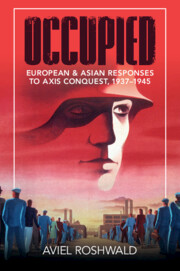Book contents
- Occupied
- Occupied
- Copyright page
- Dedication
- Contents
- Figures
- Maps
- Acknowledgments
- Introduction
- Part I Patriotisms under Occupation (the Netherlands, France, Denmark, and Thailand)
- Part II Fractured Societies and Fractal Identities: Civil Wars under Occupation (Greece, Yugoslavia, Italy, and China)
- Part III Conquest in the Guise of Liberation (the Philippines, Indonesia, and Ukraine)
- Bibliography
- Index
- References
Bibliography
Published online by Cambridge University Press: 20 April 2023
- Occupied
- Occupied
- Copyright page
- Dedication
- Contents
- Figures
- Maps
- Acknowledgments
- Introduction
- Part I Patriotisms under Occupation (the Netherlands, France, Denmark, and Thailand)
- Part II Fractured Societies and Fractal Identities: Civil Wars under Occupation (Greece, Yugoslavia, Italy, and China)
- Part III Conquest in the Guise of Liberation (the Philippines, Indonesia, and Ukraine)
- Bibliography
- Index
- References
Summary

- Type
- Chapter
- Information
- OccupiedEuropean and Asian Responses to Axis Conquest, 1937–1945, pp. 411 - 441Publisher: Cambridge University PressPrint publication year: 2023

